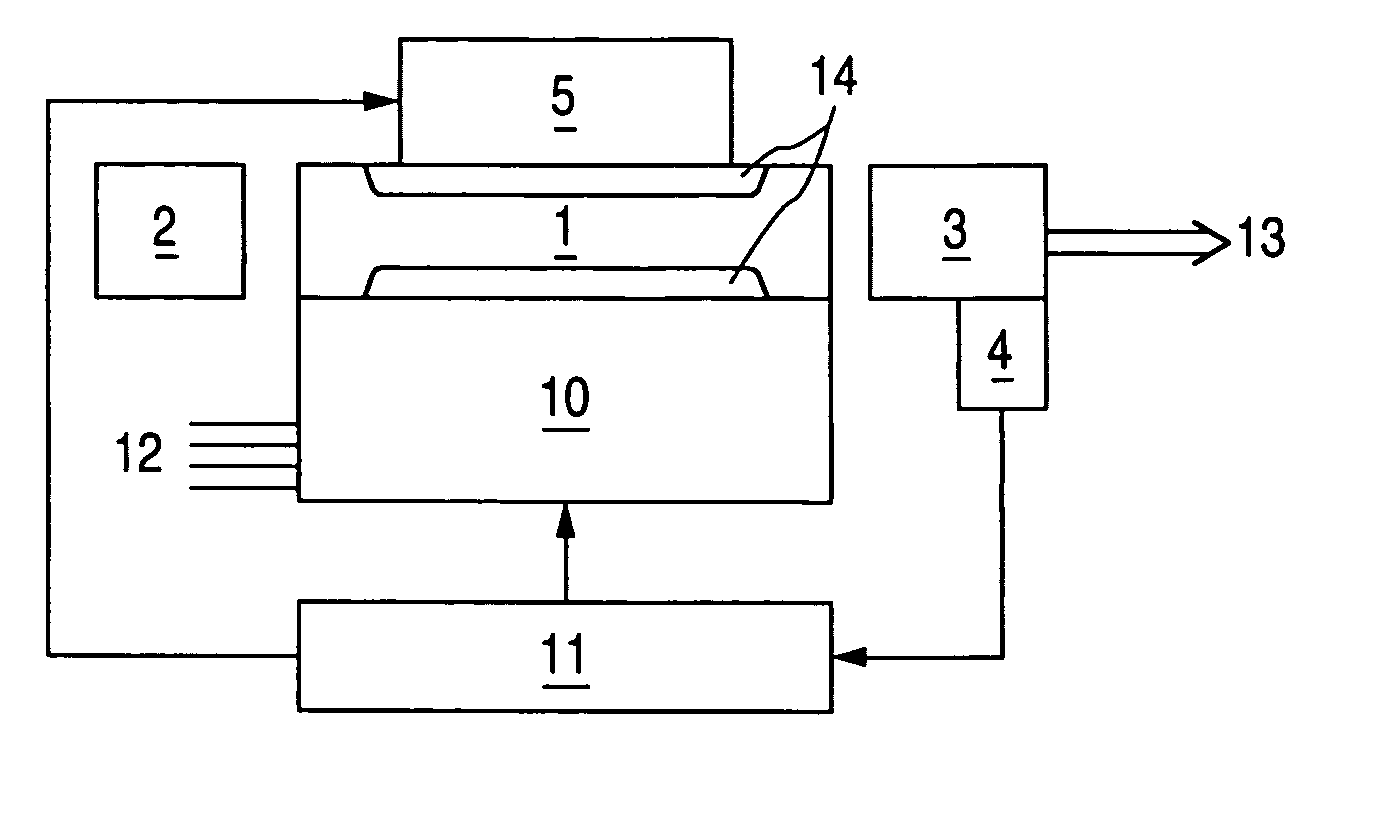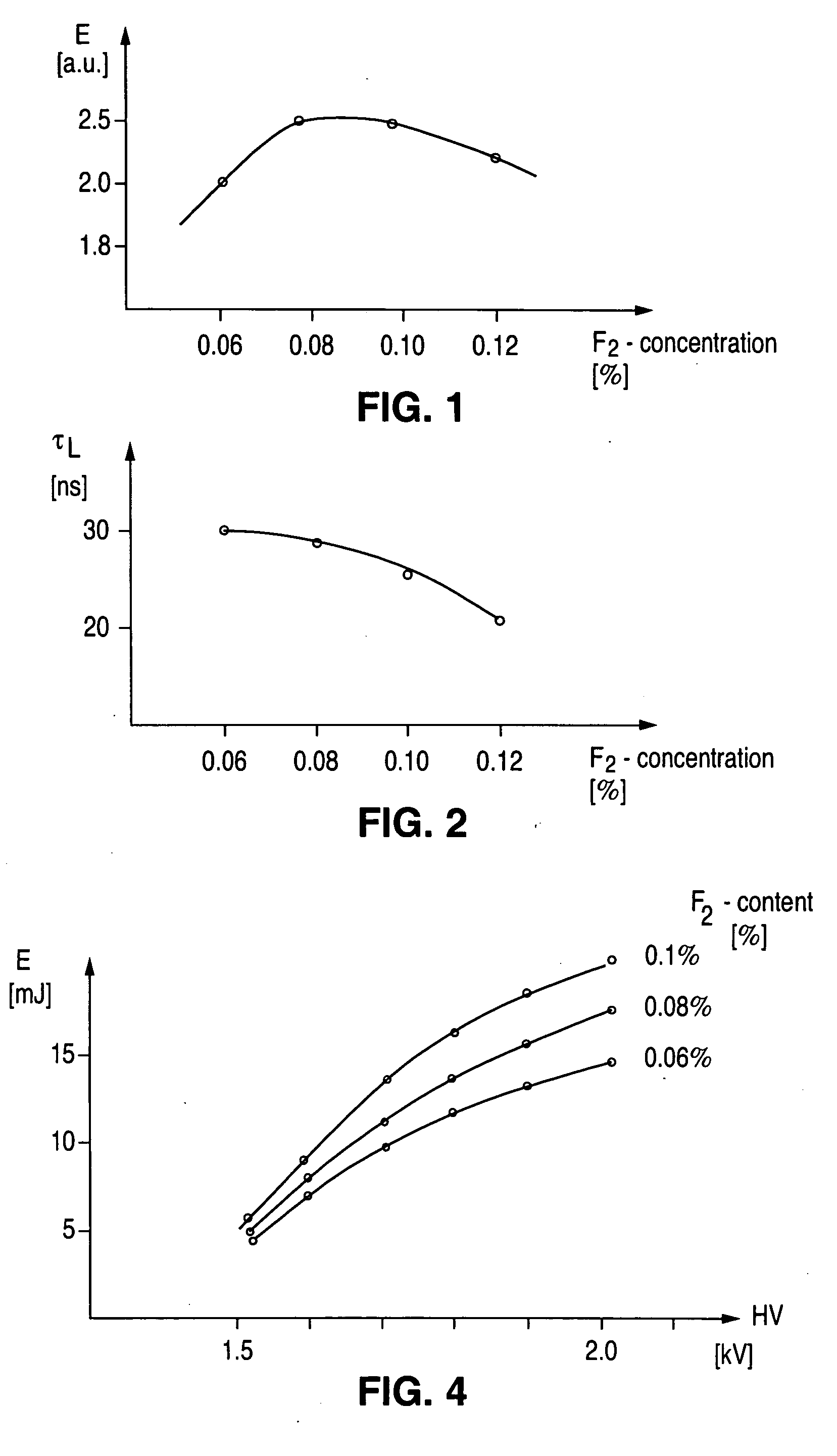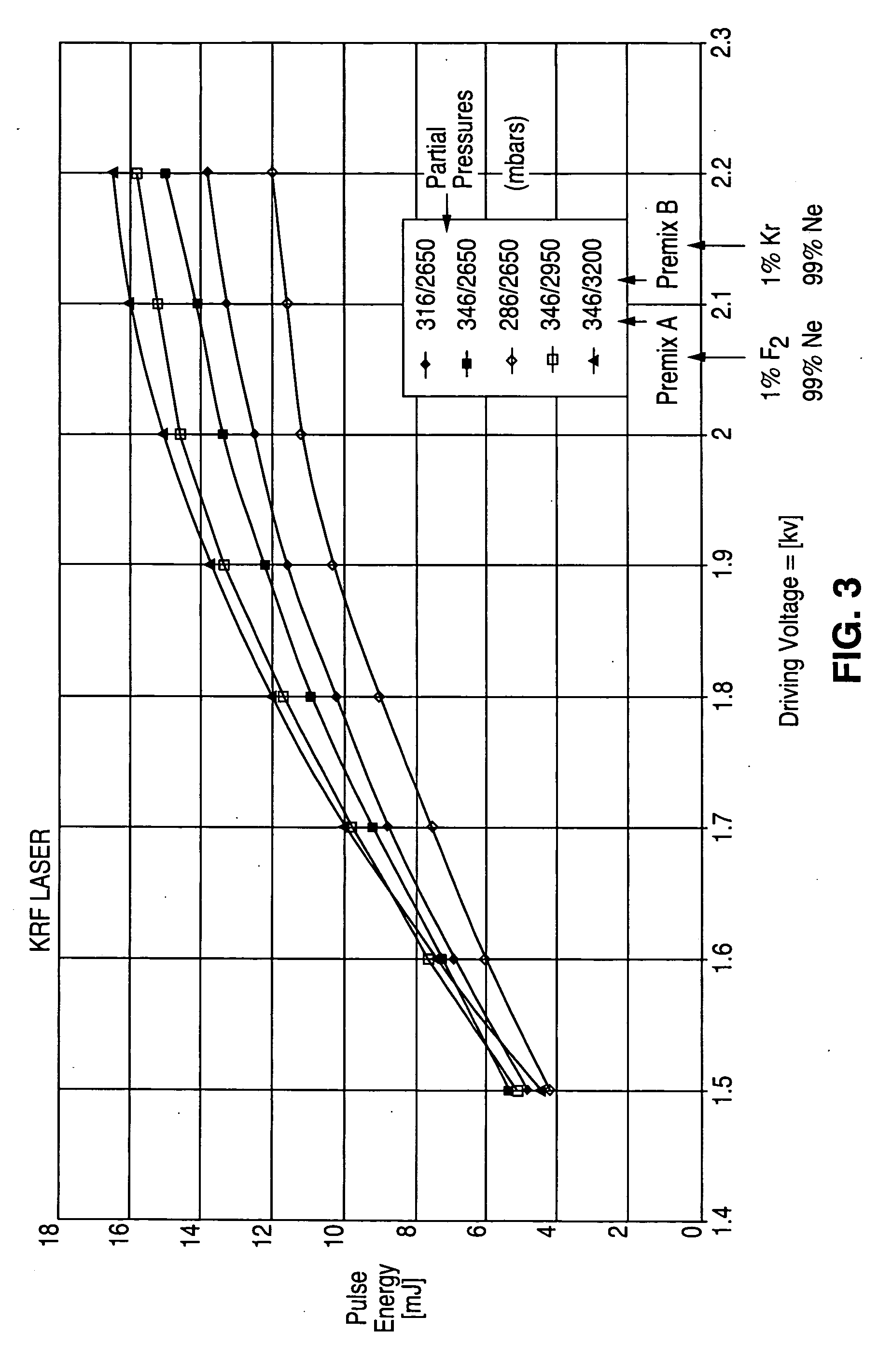Laser gas replenishment method
a gas discharge laser and output beam technology, applied in lasers, laser construction details, instruments, etc., can solve the problems of difficult to directly measure the halogen concentration within the laser tube, gas contamination occurs, and gas mixture degrade, so as to reduce turbulence, increase beam power, and reduce turbulence
- Summary
- Abstract
- Description
- Claims
- Application Information
AI Technical Summary
Benefits of technology
Problems solved by technology
Method used
Image
Examples
first embodiment
[0321]FIG. 30a schematically shows an oscillator of a laser system including a discharge chamber 202 preferably containing molecular fluorine and a buffer gas of neon, helium or a combination thereof (see the Ser. No. 09 / 317,526 application), and having a pair of main discharge electrodes 203 (not shown) and a preionization arrangement (also not shown) therein. The system shown in FIG. 30a also includes a prism beam expander 230 and a diffraction grating 232 arranged in a Littrow configuration. The beam expander 230 may include one or more prisms and preferably includes several prisms. The beam expander serves to reduce divergence of the beam incident onto the grating, thus improving wavelength resolution of the wavelength selector. The grating is preferably a high blaze angle echelle grating (see the Ser. No. 09 / 712,367 application incorporated by reference above).
[0322] The system shown includes a pair of apertures 234 in the resonator which reject stray light and reduce broadban...
seventh embodiment
[0372]FIG. 35 shows an energy detector 349 for use with an excimer or molecular fluorine laser system in accord with a seventh embodiment and the fifth aspect above. A beam splitter 350 redirects a beam portion 351 towards the energy detector 349, allowing the main beam 320 to pass through. The detector 349 may be a diode or photomultiplier detector, and may be a diamond detector such as that set forth in U.S. patent application Ser. Nos. 09 / 512,417, which are assigned to the same assignee as the present application and hereby incorporated by reference. The detector 349 is preferably particularly designed to be sensitive at 157 nm. Optics for filtering the red emission of the laser may be included such as a dispersive element, holographic beam splitter, dichroic mirror(s), or red light filter before the detector, or otherwise as set forth at U.S. patent application Ser. Nos. 09 / 598,552 and 09 / 712,877, assigned to the same assignee and hereby incorporated by reference.
[0373] The dete...
tenth embodiment
[0380]FIG. 36a illustrates the tenth embodiment relating to the shape of the main discharge electrodes 368 and 370, and the design of the discharge chamber 302 itself. The shapes of the discharge electrodes 368 and 370 significantly effect characteristics of the discharge area 372, including the discharge width d. Therefore, at least one, and preferably both, of the electrodes 368 and 370 includes two regions. One of these regions, the center portion 374, substantially carries the discharge current and provides a uniform and narrow gas discharge width. The other region, or base portion 376, preferably in collaboration with other conductive and dielectric elements within the discharge chamber, creates preferred electrical field conditions in and around the discharge area 372 and also contributes to the smoothness and uniformity of the gas flow in the vicinity of the discharge electrodes 368 and 370.
[0381] The center portions 374 and base portions 376 preferably form electrode 368 and...
PUM
| Property | Measurement | Unit |
|---|---|---|
| partial pressure | aaaaa | aaaaa |
| partial pressure | aaaaa | aaaaa |
| partial pressure | aaaaa | aaaaa |
Abstract
Description
Claims
Application Information
 Login to View More
Login to View More - R&D
- Intellectual Property
- Life Sciences
- Materials
- Tech Scout
- Unparalleled Data Quality
- Higher Quality Content
- 60% Fewer Hallucinations
Browse by: Latest US Patents, China's latest patents, Technical Efficacy Thesaurus, Application Domain, Technology Topic, Popular Technical Reports.
© 2025 PatSnap. All rights reserved.Legal|Privacy policy|Modern Slavery Act Transparency Statement|Sitemap|About US| Contact US: help@patsnap.com



